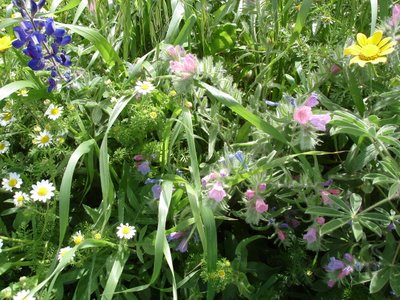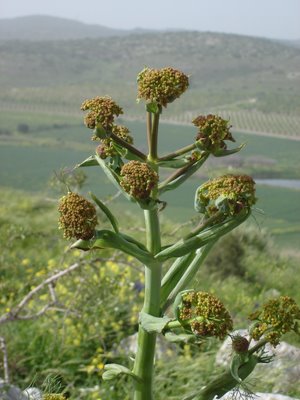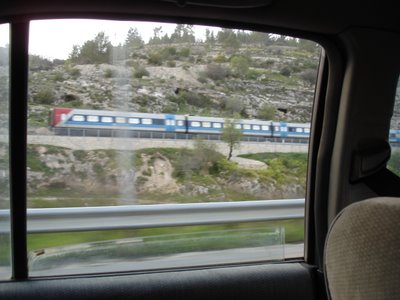A Trip to Lupine Hill
This past week, my good friends Dani and Libby Barkai took me to Givat ha-Tormosim (Hebrew for “Lupine Hill”). It was wonderful.
Dani Barkai is a fantastic tour guide, and he graciously allowed me to pick his brains all through the trip.
So here are some of the highlights, interspersed with as much as I can remember of the things Dani taught me. (Click on any picture to see a larger version.)
This is Givat ha-Tormosim as seen from the parking area. (“Whaddaya mean, we’re gonna climb that?!”)
Givat ha-Tormosim is on the route of an ancient Roman road. The steps in the photo below are part of that road. (And where are the Romans now? Hah! Romani ite domum!*—oh, sorry, I just had to do that.)
Just below the Roman steps is a remnant of a Byzantine-era mosaic:
A view from the hill. (The satellite dishes are part of Channel One’s transmitting station.)
The long, thin seasonal body of water below is nicknamed “Goliath’s Footprint.” This is because Givat ha-Tormosim is located in Emek ha-Elah (the Valley of the Terebinth), the area of Israel where David fought Goliath.
The flower below is called akhnai Yehuda in Hebrew. (Its English name is Judean bugloss.) Dani told me that the flowers change color when they are pollinated in order to cue the bees as to which blossoms already had a visit and which ones are still waiting.
A tormos (lupine): the flower for which the hill is named.
Wildflowers in profusion: the reason so many of us love this time of year in Israel as much as we do.
A tzaharon blossom. (My nickname for it is “baby iris”).
This tree is actually growing through a hole in the rock. See the trunk below?
A flowerscape—I don’t know what else to call it.
This was a lucky shot: a bumblebee flying toward a lupine blossom. Actually, I don’t know exactly what kind of bee it is. I only know it’s not the kind I usually see around Jerusalem. (Please, David of Treppenwitz, would you give this one a buzz?)
This is giant fennel. Not only is it inedible—it’s poisonous. Don’t confuse it with the edible fennel—get a good look at the leaves and smell them first. (Actually, it’s never a good idea to eat anything in the wild unless you know exactly what you’re doing—but then, you knew that, right?)
More seasonal wildflowers:
A meadowful of wild barley:
We like sheep! (When I waved a greeting to the shepherd, he wished me a happy holiday. Wasn’t that sweet of him?)
On the way back to civilization, we saw the Jerusalem train heading toward Bet Shemesh and then toward Tel Aviv. Dani quickly rolled the back window down so that I could take this picture.
Closer to home: a bee in the blossoms of the tree known in Hebrew as kelil ha-horesh (the Judas tree). Doesn’t she look nice and snug in there?
Dani and Libby, thank you for a wonderful outing! Oh, and those who would like a really fantastic tour guide, one who is knowledgeable and patient, who loves the flora and fauna of Israel with his heart and soul and who doesn’t mind having his brains picked, check out Dani’s site.
(*Romani ite domum:=Latin: “Romans, go home!” Film reference: the Latin lesson scene from Monty Python’s film The Life of Brian)


















No comments:
Post a Comment
Comments are moderated. If you're a spammer, don't waste your keystrokes. If you're a real, honest-to-goodness commenter, welcome!